Sometimes you just want to play a cooperative kids’ game with chunky plastic bits and illustrations that appear to be lifted directly from a PBS animated series. Preferably, you’d like said game to be crafted by a credible designer…and his son.
Thankfully, when such a mood befalls you, Kraken Attack! awaits you with open arms—eight of them, to be exact.
In 2020, French publishing house LOKI dropped this delightful pirate adventure on the world with far too little fanfare. Design credits belong, in order, to Esteban and Antoine Bauza. At the time of release, I believe (based on the release date of his promo card for 7 Wonders: Leaders) the younger Bauza would have been shy of ten years old, but his top billing makes me smile.
In Kraken Attack! the fearsome Kraken Tootone is ravaging the seven seas and your ship of skilled pirates is fixin’ to teach the tentacled beast a lesson before its pouncing persistence brings disaster. Let’s take a peek.
Kraken up
The central board of Kraken Attack! features a ship divided into four quadrants, each of which is guarded by two portions of the ship’s walls. Throughout the game, eight tentacles move back and forth in each of four rows to the ship’s left and right. As these tentacles approach the ship, they might tear away the walls of the deck, exposing the ship to receiving dreaded damage tokens. Every time a tentacle strikes the ship, it returns to its starting position.
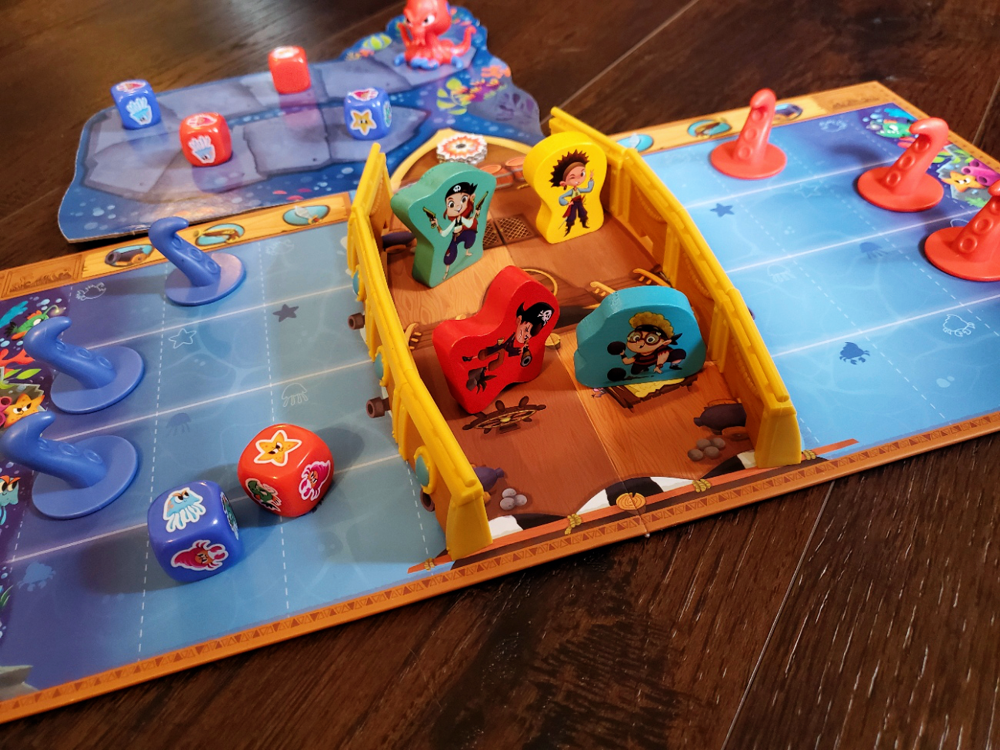
Each player’s turn begins with a roll of the red & purple Kraken dice. For each icon rolled, the matching tentacle moves one space nearer the ship. Blank faces mean no movement. For each Eye of the Kraken rolled, every tentacle of the matching color moves forward.
To drive the tentacles back, players must engage the battle by moving to a quadrant and attacking with the weapon fitting a tentacle’s current location. The column of spaces nearest the ship requires a Saber attack, followed by a column for Pistol and Cannon fire.
Each player has a deck of ten cards that cycle throughout the game. Players choose one of the two face-up cards before them. Cards hold either two or three icons that allow for movement, the various attacks, or repair (for those busted deck walls). Jolly Roger icons are wild. If the card has a funny face at the bottom, two things happen. First, the player’s character can exercise a special ability. Second, the Kraken figure moves towards the ship.

Just beyond the bow of the ship, a separate board contains the full-bodied (and full color) Kraken figure. It moves toward the ship, releasing additional Kraken dice and making the tension more palpable. Having brought the dice total to six, the Kraken eventually enters the waters, replacing one of the tentacles, to unleash the endgame.
When the Kraken figure enters play, every ounce of attention shifts to assigning three damage tokens—whether by blade, bullet, or ball—before the beast bestows four damage tokens through the ship’s holey hull. Success and failure are instantaneous once the necessary tokens arrive.
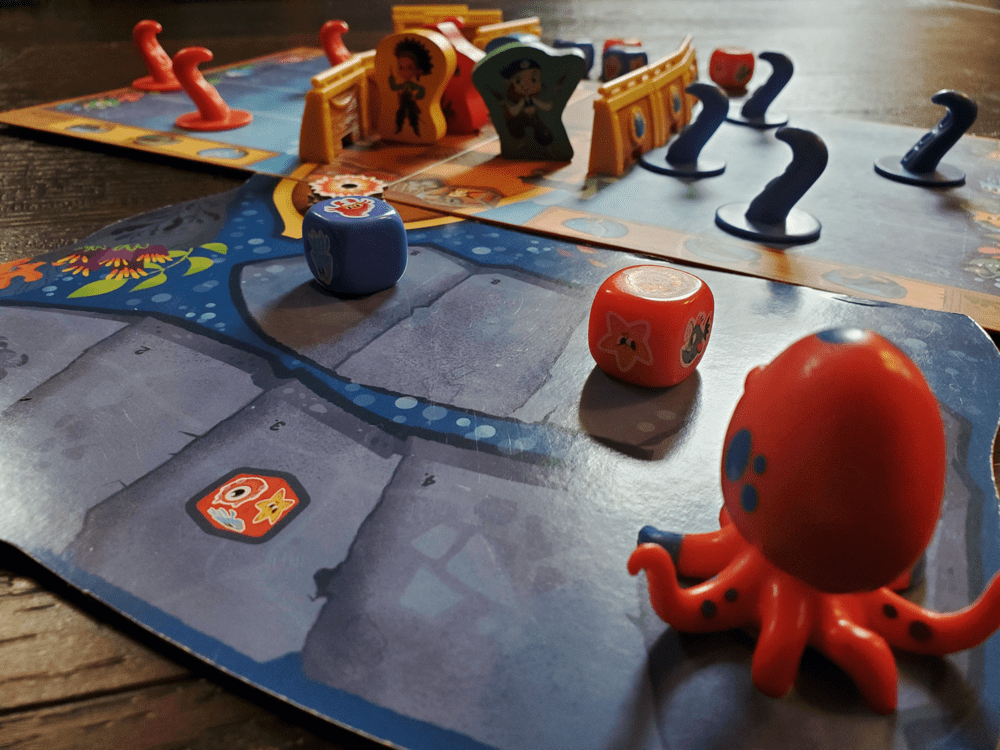
If you’re looking for a greater or lesser challenge, the rulebook contains several simple adaptations to slide the scale of difficulty. This, in combination with the four asymmetrical character abilities, ensures a fair amount of variety from game to game and group to group.
Aw, coconuts!
I spotted Kraken Attack! on the shelf of a local game store a few years back. The Kraken figure was staring at me through the cellophane window like something out of a Playskool toy pack. I brought it home to realize it was even more sturdy and glorious. In fact, everything inside this box is wonderfully constructed. The deck walls are equally colorful and bulky. The tentacles are whimsical. The oversized character pieces are printed on chunky wood and are just the right size to make the whole endeavor feel cramped and tense.
I realize the gameplay is important, but I cannot emphasize enough the level of curb appeal this game has for children. My daughter loves to play with it even when we’re not playing the actual game. It looks like a living episode of Jake and the Neverland Pirates. The production quality enhances every detail. The thirty-six page rulebook is evenly portioned for six languages and the game pieces are completely language independent.
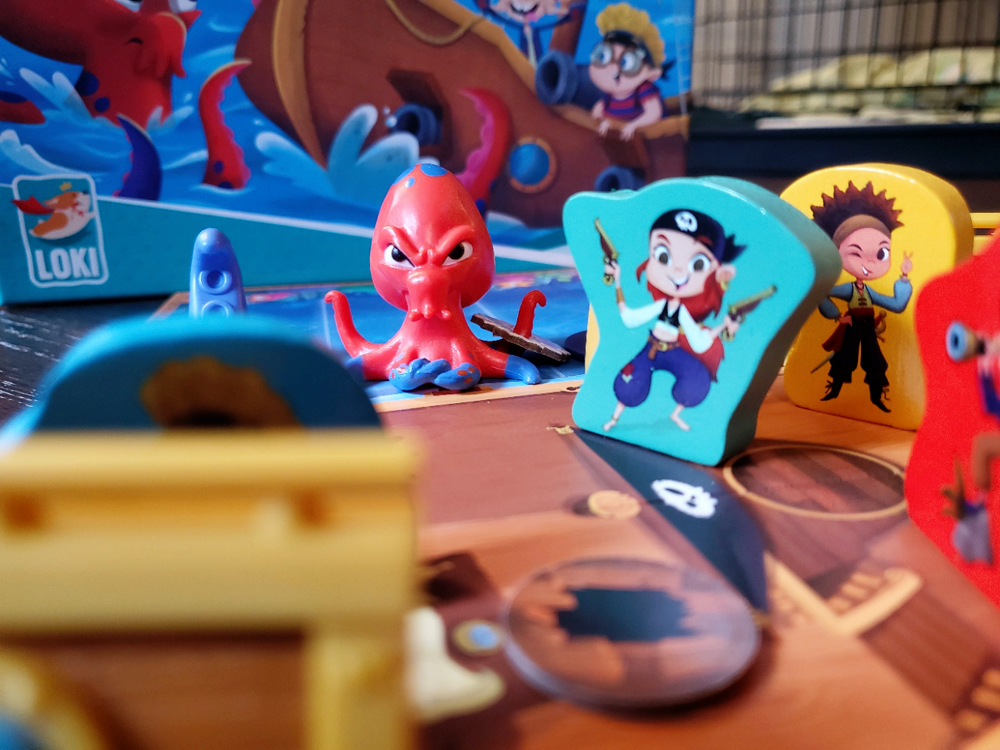
As a cooperative experience, Kraken Attack! adheres faithfully to the expected model. Increasingly bad things happen, to which the player may only respond with a static set of actions. On the one hand, everyone wants the Kraken in the waters for a shot at victory. On the other hand, no one prefers rolling six dice to two. The situation slowly descends into chaos as walls disappear, holes materialize, and fear sets in. Victories come by the skin of a pirate’s grimy teeth.
The asymmetrical characters give the game personality. Astrid’s swiftness allows her to perform one action twice. Billy’s affinity for loud booms means he can target tentacles anywhere on his side of the ship via cannon. Samuel nullifies the Eye of the Kraken by hiding (an ability that is particularly useful in two-player games). Elena’s a deadeye with the Pistol, allowing her to strike from anywhere on the ship. The icons are not evenly distributed from deck to deck either, so every character truly brings a unique experience.
We’ve been playing Kraken Attack! off and on for the past three years. I played it again this morning and it still has all the charm and challenge of our first play. Our kiddos have all played and enjoyed the adventure, and they’ve handed down the experience to their younger siblings. If you’re looking for a straightforward coop to play with the family, especially with those kiddos age four to ten, this seafaring battle box would be near the top of my recommendations.


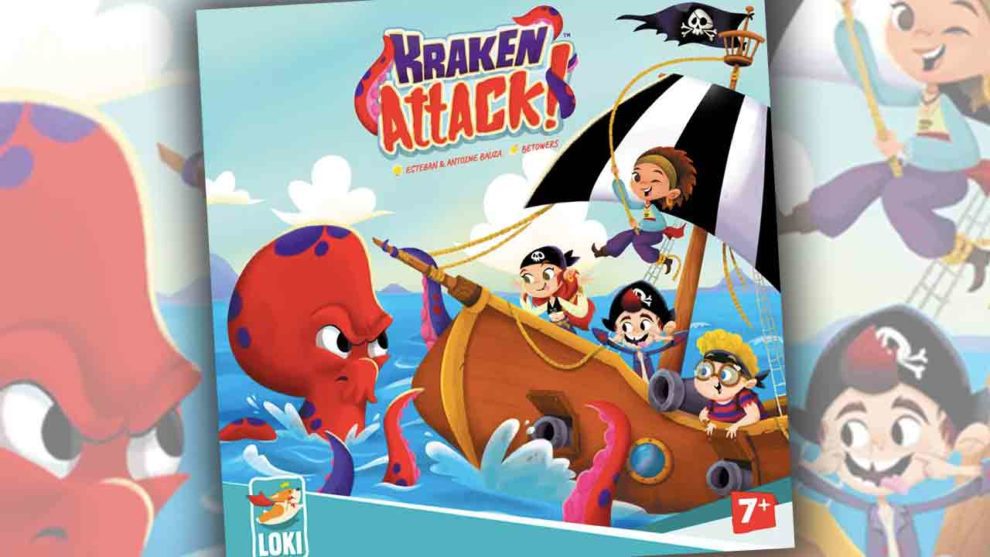

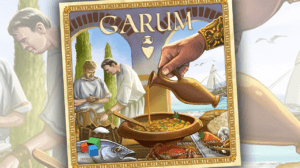







Add Comment